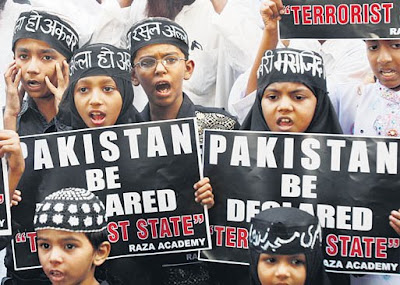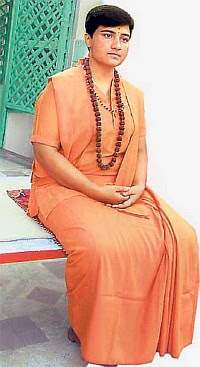 Hikma being listed at London Stock Exchange
Hikma being listed at London Stock Exchange“Innovation, said Steve Jobs, “distinguishes between a leader and a follower.” By that standard, Jordan-originated multinational company Hikma Pharmaceuticals falls in the category of a ‘leader.’
With a modest start from Jordan in 1978, Hikma has grown into a global pharmaceutical giant with 176 pharmaceutical products in 397 dosage strengths and forms in 40 different countries.
In the beginning, Hikma’s “primary focus” was to develop branded pharmaceuticals business across Middle East and North Africa (MENA). Today, the company has become a leading pharmaceutical giant having a significant presence in MENA, United States and Europe. The company’s strength can be gauged from the fact that its total revenue shot to $448.8m in 2007, an increase of 41.6% from the previous year, underlying revenue growth of 28%.
The buzzwords that sum up Hikma’s miraculous rise are: Innovation, Research & Development, and Acquisitions. These words define the corporate identity of Hikma. These words have breathed life into Hikma or vice versa.
Since its inception, Hikma has persistently indulged in innovation. No wonder in barely three years after entering the United States, it became FDA compliant in 1994. Two years later, it became the first Arab company to get FDA approval.
It was because of Hikma’s innovation that it started manufacturing injectable pharmaceutical products in Portugal in the year 1997. Four years later, it began manufacturing injectable powdered cephalosporin for the MENA and Portugal. Since then, as the company website puts it, Hikma has expanded significantly, both organically and through acquisition.
Hikma's business
Hikma’s business can be broadly divided into three categories: Branded, Generics and Injectables.
With an impressive experience of almost three decades in pharmaceuticals, Hikma has an array of branded products of “consistently high standard.” It is because of this reputation that multinationals turn to Hikma to manufacture and market their branded pharmaceuticals under in-licensing agreement. Hikma has 236 branded products (including 33 in-licensed products). In 2007, Branded products yielded a whopping profit of $198.9m.
In Generics, the company sells unbranded generic products in the United States, one of the world’s most competitive pharmaceutical markets. To satisfy “cost-conscious” customers, Hikam sells a broad range of high and low volume products. This business operates under West-ward label. The company has 44 non-branded generic products whose profit was $124.2m in 2007.
In Injectable business, Hikma manufactures and sells generic injectable pharmaceuticals as well as some branded injectable products under license. Hikma is becoming a leader in this category with their injectables being sold in MENA, Europe and United States. Injectables, consisting of 73 products, produced a profit of $121.2m.
A Strong R&D team
Hikma success also lies in its strong research and development team. The company has 127 scientists and experts dealing with pharmaceutical formulation, process optimization, analytical chemistry and drug delivery. The R&D team consists of strong technical expertise which focuses on niche and higher margin products. The team looks for products with a strong market potential or the products which are fast growing in therapeutic categories.
Hikma’s R&D capabilities have been taken seriously. In 2007 alone, the company received 129 product approvals in a range of therapeutic categories. With effective R&D, Hikma has a strong pipeline of products waiting approval.
Strategy Emboldened by LSE (London Stock Exchange) Listing
Hikma’s listing on LSE (London Stock Exchange) in November 2005 marked the beginning of a new era in the Company’s development giving it major financial flexibility.
Hikma’s strategy is simple: to build a strong and diverse product portfolio; to expand geographic reach; to develop and leverage global research and development capabilities. Its strategy also aims to “maintain the very high standards” for manufacturing capabilities.
Across its three core businesses (Branded, Generics and Injectables), Hikma has three strategic aims:
1. To consolidate strong market position in the MENA region by launching new products, expanding geographic reach and increasing market share.
2. To grow Injectable business by expanding product portfolio, developing manufacturing capabilities and strengthening sales and marketing network.
3. To continue to pursue profitable growth and maintain significant cash generation in the United States by focusing on high margin, niche product opportunities.
For Hikma, 2007 was the year of acquisitions. Hikma made four acquisitions: Alkhan Pharma (Egypt), Arab Pharmaceutical Manufacturers - APM (Jordan and Saudi Arabia), Ribosepharm and Thymoorgan (Germany).
On Course for Major Global Expansion
In just a year’s time Hikma’s product portfolio base has been transformed: It launched 28 new products, received 167 approvals across all businesses and geographies and submitted 74 regulatory filings in Jordan, the US and Europe alone.
Said Darwazah, Chief Executive of Hikma, is confident that the company has never been in such a strong position before.
“Our position as a leading pharmaceutical manufacturer in the MENA region is stronger than ever,” he said. He was equally confident about the company’s portfolio base and manufacturing capabilities.
“We have an excellent product portfolio, a large and growing sales and marketing team and excellent manufacturing capabilities that enable us to take advantage of the extremely favourable market environment in which we operate,” he said.
Acquisitions in MENA region have boosted the morale of its Chairman. “Through the two acquisitions we made in the region this year, we are rolling out our successful business model into new markets like Egypt and strengthening our position in our core and developing markets like Jordan, Saudi Arabia and the other Gulf countries,” he said.
With an enviable balance sheet, Hikma’s future looks radiant. The Group gross margin made a healthy 49.3%, 14.8% increase in profit attributable to shareholders, which strengthened its balance sheet and the company’s ability to finance future growth. The company also raised gross proceeds of $160m to fund acquisition of APM.
Mr. Darwazah is hopeful that 2008 will be extremely fruitful for the company.
“We expect another year of strong performance in 2008 driven by our Branded and Injectable businesses as we continue to grow Hikma into a leading specialty pharmaceutical company and deliver high returns on investment to our shareholders,” he said.
 Children of Heaven: How precise is Israel's "precision" bombing? (Photo Courtesy: Khalil Hamra / Associated Press)
Children of Heaven: How precise is Israel's "precision" bombing? (Photo Courtesy: Khalil Hamra / Associated Press) 












